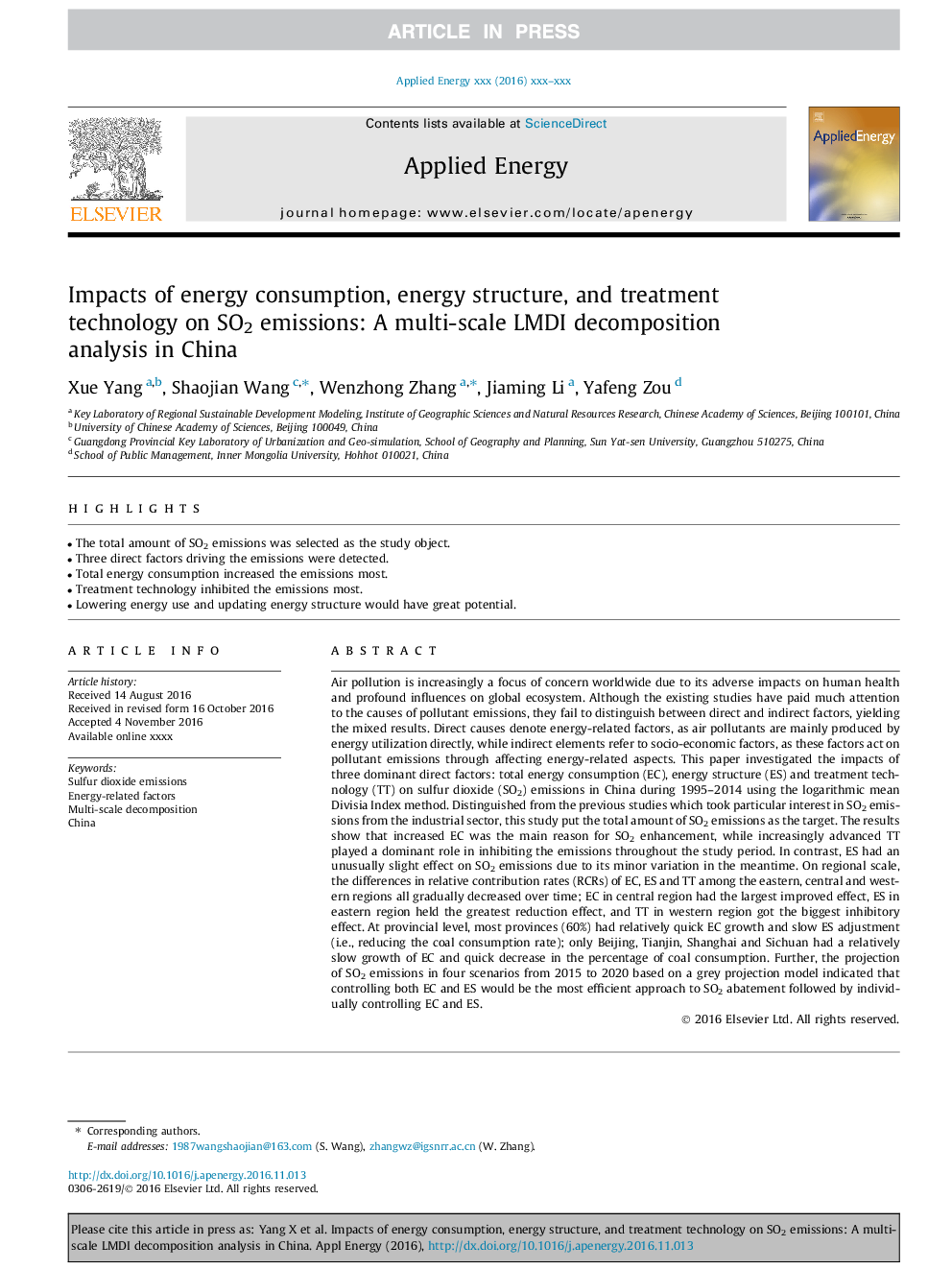| کد مقاله | کد نشریه | سال انتشار | مقاله انگلیسی | نسخه تمام متن |
|---|---|---|---|---|
| 4916903 | 1428104 | 2016 | 13 صفحه PDF | دانلود رایگان |
عنوان انگلیسی مقاله ISI
Impacts of energy consumption, energy structure, and treatment technology on SO2 emissions: A multi-scale LMDI decomposition analysis in China
دانلود مقاله + سفارش ترجمه
دانلود مقاله ISI انگلیسی
رایگان برای ایرانیان
کلمات کلیدی
موضوعات مرتبط
مهندسی و علوم پایه
مهندسی انرژی
مهندسی انرژی و فناوری های برق
پیش نمایش صفحه اول مقاله

چکیده انگلیسی
Air pollution is increasingly a focus of concern worldwide due to its adverse impacts on human health and profound influences on global ecosystem. Although the existing studies have paid much attention to the causes of pollutant emissions, they fail to distinguish between direct and indirect factors, yielding the mixed results. Direct causes denote energy-related factors, as air pollutants are mainly produced by energy utilization directly, while indirect elements refer to socio-economic factors, as these factors act on pollutant emissions through affecting energy-related aspects. This paper investigated the impacts of three dominant direct factors: total energy consumption (EC), energy structure (ES) and treatment technology (TT) on sulfur dioxide (SO2) emissions in China during 1995-2014 using the logarithmic mean Divisia Index method. Distinguished from the previous studies which took particular interest in SO2 emissions from the industrial sector, this study put the total amount of SO2 emissions as the target. The results show that increased EC was the main reason for SO2 enhancement, while increasingly advanced TT played a dominant role in inhibiting the emissions throughout the study period. In contrast, ES had an unusually slight effect on SO2 emissions due to its minor variation in the meantime. On regional scale, the differences in relative contribution rates (RCRs) of EC, ES and TT among the eastern, central and western regions all gradually decreased over time; EC in central region had the largest improved effect, ES in eastern region held the greatest reduction effect, and TT in western region got the biggest inhibitory effect. At provincial level, most provinces (60%) had relatively quick EC growth and slow ES adjustment (i.e., reducing the coal consumption rate); only Beijing, Tianjin, Shanghai and Sichuan had a relatively slow growth of EC and quick decrease in the percentage of coal consumption. Further, the projection of SO2 emissions in four scenarios from 2015 to 2020 based on a grey projection model indicated that controlling both EC and ES would be the most efficient approach to SO2 abatement followed by individually controlling EC and ES.
ناشر
Database: Elsevier - ScienceDirect (ساینس دایرکت)
Journal: Applied Energy - Volume 184, 15 December 2016, Pages 714-726
Journal: Applied Energy - Volume 184, 15 December 2016, Pages 714-726
نویسندگان
Xue Yang, Shaojian Wang, Wenzhong Zhang, Jiaming Li, Yafeng Zou,